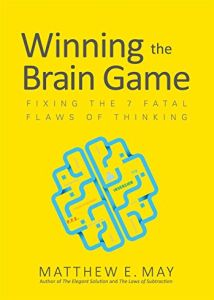Join getAbstract to access the summary!

Join getAbstract to access the summary!
Matthew E. May
Winning the Brain Game
Fixing the 7 Fatal Flaws of Thinking
McGraw-Hill, 2016
What's inside?
When you’re trying to puzzle out a problem, your thinking can fail in seven predictable ways.
Recommendation
When you try to puzzle out a problem, your thinking can fail in seven predictable ways, such as leaping to conclusions, failing to ask the right questions and “self-censoring.” Strategy and innovation consultant Matthew E. May, an award winning author, says you can avoid becoming stuck in automatic thought patterns or prejudices if you recognize these relatively familiar, common cognitive errors and frame your problems carefully. May condenses research about thought patterns into straightforward, basic advice that can help you avoid sabotaging yourself. getAbstract recommends his lessons to executives and managers at all levels who are relatively new to the field of cognitive errors.
Summary
About the Author
Speaker, facilitator and coach Matthew E. May writes on strategy and innovation. He also wrote The Laws of Subtraction: 6 Simple Rules for Winning in the Age of Excess Everything and In Pursuit of Elegance: Why the Best Ideas Have Something Missing, written with Guy Kawasaki.




















Comment on this summary